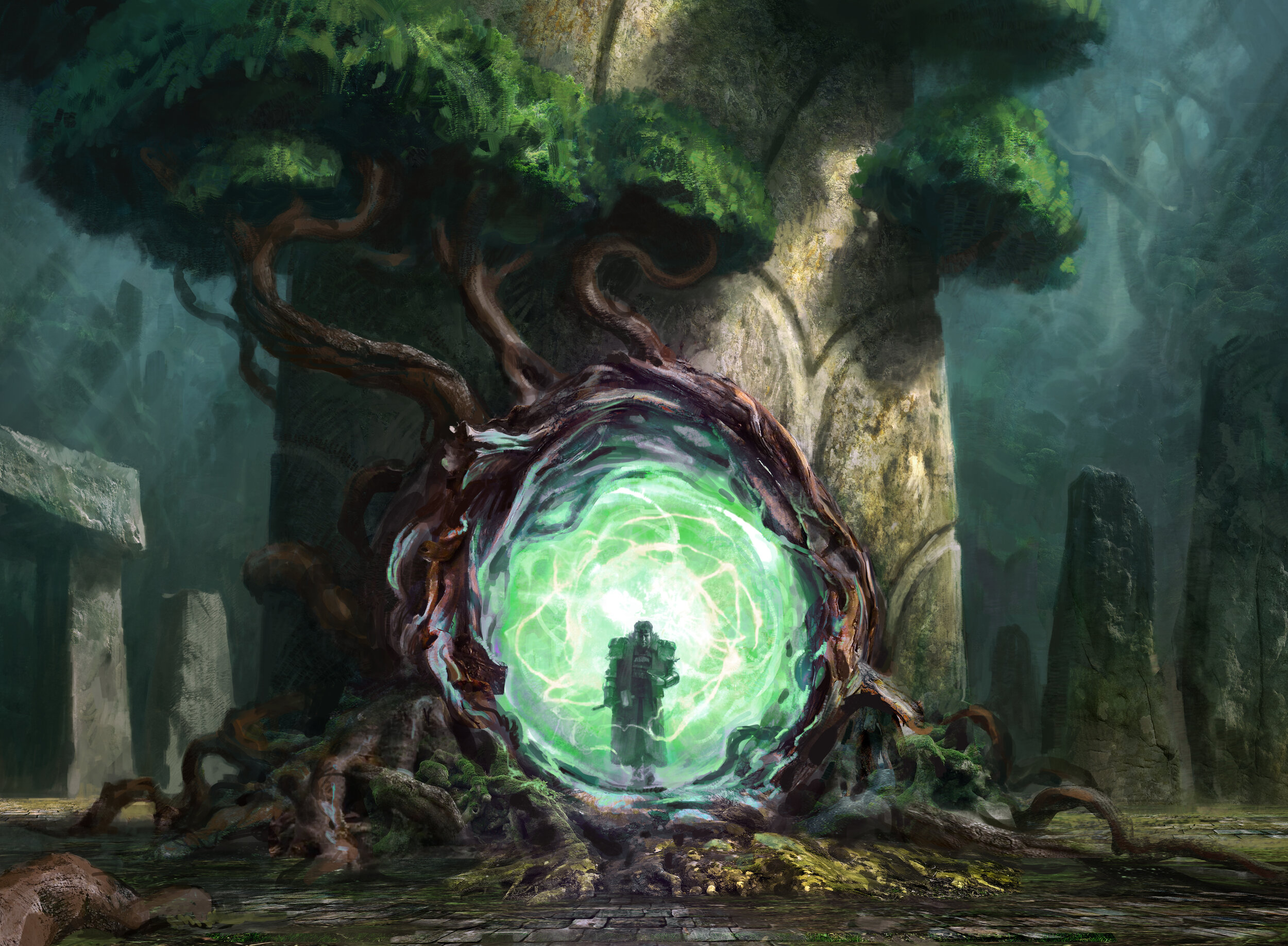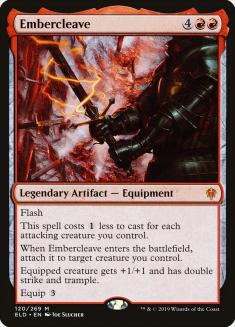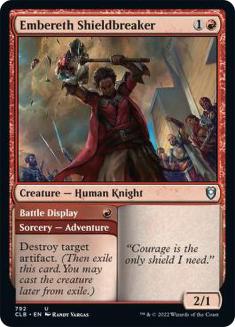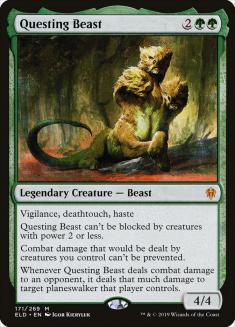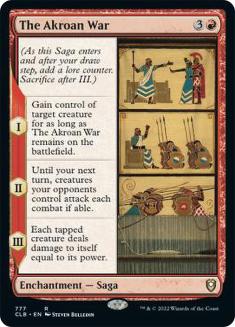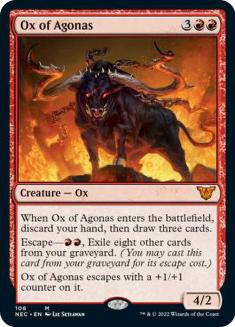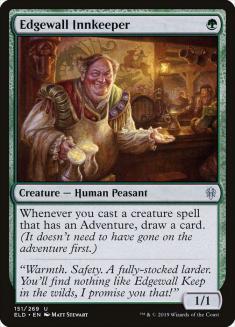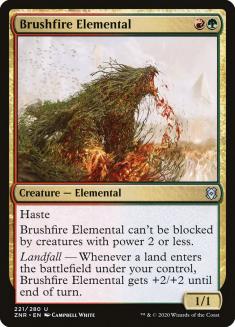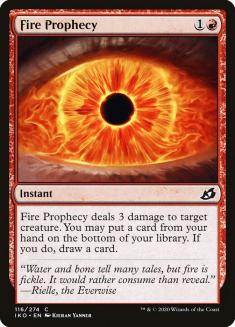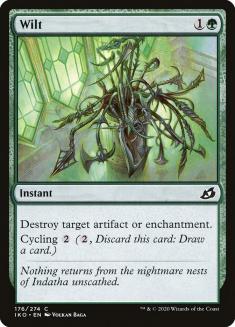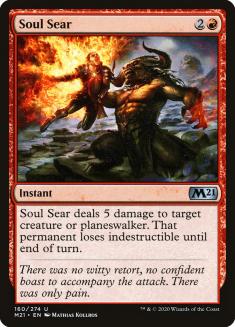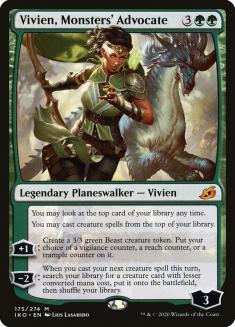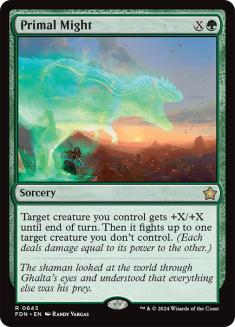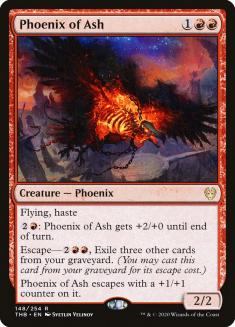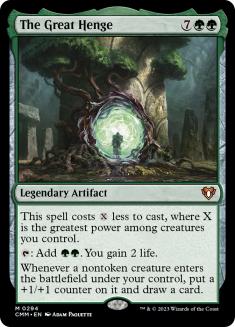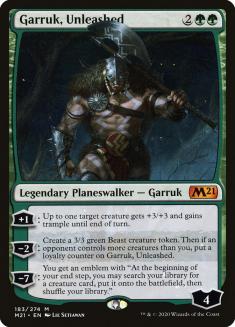Earlier this month, when I Top 8’ed the Zendikar Rising Championship, one of the two decks that led me to that Top 8 was Gruul Adventures. Not only did I not lose a single match all weekend with Gruul Adventures but an extremely similar decklist helped teammate Jan-Moritz Merkel Top 8 too, whilst a pair of teammates lost their win-and-ins for Top 8. Going by results, it feels undeniable that my team’s Gruul Adventures list was perfect for the weekend.
Since then I’ve had a lot of people tag me on Twitter to say they’ve been making high Mythic on Magic Arena with that Gruul Adventures list, and a bunch of requests for a sideboard guide or an article about the deck. Standard seems to have settled somewhere close to where it was at the time of the Championship, meaning this Gruul Adventures list still feels great to me in the current metagame.
Creatures (28)
- 2 Scavenging Ooze
- 3 Embereth Shieldbreaker
- 4 Lovestruck Beast
- 3 Questing Beast
- 4 Edgewall Innkeeper
- 4 Bonecrusher Giant
- 4 Brushfire Elemental
- 4 Kazandu Mammoth
Lands (20)
Spells (12)

The big changes my team leant into for the Zendikar Rising Championship were going back up to the full four Embercleave, and introducing Embereth Shieldbreaker and Questing Beast to the maindeck. These changes are pretty well-known and widely accepted by now, but it’s important to understand why they were necessary so you can both understand how to sideboard and be more prepared to react to future metagame changes.
The answer for all this, largely, comes down to Mono-Green Food. This deck emerged with one goal in mind: taking down every single Gruul Adventures player in the field. With people having their Gruul Adventures decks inbred for the mirror, sometimes playing as few as two Embercleaves, it’s no surprise Food crushed the matchup. With the full four Embercleave, Questing Beast for the Cleave combo, and Embereth Shieldbreaker to interact with opposing copies of The Great Henge even in Game 1, the matchup is a lot better, and it turns out all these cards you need to maindeck to improve the matchup are also just good.
These changes might hurt you a little bit in the mirror matches if people stayed on the more inbred builds, but having access to Battle Display to kill The Great Henge and Embercleave in Game 1 makes up for this at least a little bit, and whilst Shieldbreaker isn’t exciting in a few different matchups, it still looks great when drawn alongside Edgewall Innkeeper and passable when you just need a two-drop to help you curve into Embercleave, which is very much the plan in a lot of Game 1s, considering you have the full playset of the legendary Equipment available to you there.
Questing Beast is also excellent against the various flavours of Doom Foretold Control that rose in an attempt to fight Gruul Adventures, and combining it with Embercleave is your best plan against Temur Adventures; suddenly all these decks that tried to hate out Gruul Adventures are very beatable, allowing Gruul Adventures to come out on top once again.
The one slot I’m not entirely sold on in this 75 is the maindeck copy of The Akroan War which is pretty bad in a few different matchups, but which I played and for now continue to play simply because I don’t want to give up too many points in the mirror match. If you’re looking for other cards to play in this flex spot instead, I think a copy of Ox of Agonas is quite nice as a one-of due to the first escape card in the maindeck having very high upside against Dimir Rogues. Some of my teammates played a fourth Questing Beast instead, focusing in on assembling the Cleave combo more reliably Game 1; personally I’m a bit too scared of drawing multiple copies of Questing Beast and having copies stranded in hand, but I do think it is a very justifiable choice if you want to play it.
Most of my advice and discussion is going to be more matchup specific than this, but I see enough things said about when to play Edgewall Innkeeper against removal-heavy red or black decks that I feel the need to speak up. Namely, this is the question of whether you run out the Innkeeper early, exposing it to removal but letting you maximise your mana usage and ability to curve out, or hold onto it for later where you can get a guaranteed card draw trigger by casting Innkeeper and an adventure creature in the same turn. The reality is that you have to assess each situation independently, but here are some rough heuristics:
- The clearest example for just running out the Innkeeper is when you have a really land-light hand and there’s a high chance you’ll need the card draw off a follow-up Adventure creature to find more land drops. A two-lander with Innkeeper and Shieldbreaker makes this play pretty clear, but it will often be the case with three-landers featuring Innkeeper and a three-mana Adventure creature too.
- Somewhat related to the above, spell-heavy hands with a lot to do with their mana are much happier just running out Innkeeper without being guaranteed value off it, since even if it dies you’ll have plenty to do. Hands that are pretty focused on just curving into an early Embercleave tend to fall under this category, where just flooding the battlefield with bodies can be more important than maximising value.
- I run out Innkeeper more aggressively if I have Ox of Agonas in my hand since you’re more fine with your opponent trading off a removal spell here when you have the Ox to refill your hand in the aftermath.
- I’m much more inclined to hold onto Innkeeper if I believe my opponent will be unlikely to have anything effective to do with their mana when not presented with an Innkeeper to kill.
- Relatedly and more specifically, if I’m on the draw against an Elspeth’s Nightmare deck and there are no creatures on the battlefield for my opponent to kill with their Turn 3 Nightmare, then I am much less inclined to run out my Innkeeper on my Turn 2.
- I’m much more inclined to run out Innkeeper when it gets to act as removal-bait; namely, I don’t have any Adventure creatures to trigger it with later but do have copies of Brushfire Elemental, Kazandu Mammoth, Scavenging Ooze, and Questing Beast in hand to follow up with that I don’t want killed.
- If your only potential play on Turn 3 is looking to be the lone Adventure creature you have in your hand, then can you afford to not develop a threat on Turn 3 to guarantee that Innkeeper trigger on Turn 4? Sadly this is an impossible question to break down into an easily digestible heuristic, as the answer is very dependent on any number of pieces of context belonging to the situation you’re in at the time, and I could probably write an article about this question on its own. Fortunately the earlier points cover most scenarios and hopefully give you a better idea of how to approach things.
With no further delays, on to the matchup guide!
Sideboard Guide
VS Gruul Adventures
Out:
In:
I see some people keeping in Brushfire Elemental on the play, but I really dislike that. It’s an easy mistake to make as Game 1 revolving a lot more around Embercleave than the sideboarded games means that in Game 1 Elemental actually ends up looking pretty good on the play, but the sideboarded games tend to last at least a little bit longer, meaning that, in addition to its vulnerability to Stomp, the Elemental opens you up to clean two-for-ones from Shatterskull Smashing.
Questing Beast is a hard card to justify having in for the sideboarded games. It trading down into Bonecrusher Giant and Lovestruck Beast is bad enough, and it’s harder to assemble the Embercleave/ Questing Beast combo with less Embercleaves and more Wilts floating around, but worst of all the card makes The Akroan War even more devastating than usual. This is partially because the combination of haste and vigilance means your opponent will always get to swing with the stolen Questing Beast, and partially because forcing you to attack means you’ll send your next-best creature into the Beast’s deathtouch ability, nearly guaranteeing a devastating two-for-one. The risk is just not worth it.
The sideboarded games of the Gruul Adventures mirror are very weird in that they can play out in a number of different ways. Sometimes an early Innkeeper or Lovestruck Beast runs away with the game, sometimes The Great Henge cascades so much advantage that the other player can’t keep up, The Akroan War can either allow one player to run the other over in the early-game or set up to decimate your opponent’s clogged-up battlefield in the late-game, and meanwhile Embercleave stands to make everything else going on look silly by comparison. This is to say, don’t tunnel vision your perspective on what the mirror match is about, and instead be willing to react to your draw and your opponent’s draw, ready to reassess what actually matters in this specific game on this specific turn.
VS Dimir Rogues (Lurrus)
Out:
In:
VS Dimir Rogues with Zareth San, the Trickster
Out:
In:
I really dislike Soul Sear against Lurrus of the Dream-Den builds of Dimir Rogues since you’re almost guaranteed to be trading down in terms of mana when you cast it. The card isn’t great against non-Lurrus versions but killing Zareth San, the Trickster is so important that I bring in this card regardless, especially considering Embercleave tends to be even worse against these builds due to the presence of Petty Theft.
In Game 1 you grind much worse than your opponent does, and outside of resolving The Great Henge, the only way you’re going to beat cascading copies of Into the Story is by ending the game as quickly as possible, so lean towards more aggressive lines when in doubt. In the sideboarded games the dynamic changes slightly with you having more sources of card advantage, more in the way of removal, and the ability to interfere with your opponent’s synergies with your escape spells.
Be very aware of your graveyard count. I lean slightly towards plays that won’t put me to seven cards in the graveyard when I feel like I can keep my opponent off Into the Story for a couple of turns, though sometimes your opponent’s mill engine is decidedly online and there’s nothing you can do about it. Be aware of what Drown in the Loch can and can’t hit at any point in time; most notably, an awful lot of the time in the early-game it won’t be able to hit The Great Henge. Finally, you can often plan with escape cards in mind; escaping a creature can empty your graveyard in such a way that your opponent can Drown neither the escaped creature nor the follow-up spell, so be prepared to sequence with this in mind.
VS Mono-Green Food
Out (on the play):
In (on the play):
Out (on the draw):
In (on the draw):
Mono-Green Food was a particularly challenging matchup for a while, but Embereth Shieldbreaker and Questing Beast go a long way to making the matchup a much more even fight. Your most effective approach to the matchup is slapping an Embercleave onto a large creature, or ideally a Questing Beast, though a timely The Akroan War can set your opponent far enough behind such as to help you win the games where you don’t have the Cleave at the ready.
Your Food opponent is good enough at putting a wall of toughness onto the battlefield that it will often take a couple of clean Embercleave hits to kill them, so plan with that in mind. Also be aware that Wicked Wolf can actually kill a suited-up Questing Beast in combat by making itself indestructible, though your opponent will still take nine damage in the process, which is often the more important thing when you’re taking this aggressive stance.
On the draw it’s a bit harder to reliably get Embercleave or The Akroan War kills. I dislike trying to out-grind Mono-Green Food with Gruul Adventures as their deck is better at grinding than yours, but your Plan A being less effective on the draw forces you to keep in The Great Henge to be more open to grinding regardless.
This is the one matchup where I’m hesitant to ever really run out Embereth Shieldbreaker without having cast Battle Display. Witch’s Oven is an important card to kill because of how it counters The Akroan War, The Great Henge is obviously terrifying, and even just Shattering a Food token can matter for tripping up your opponent’s development, though be careful that your opponent isn’t capable of sacrificing the Food in response.
This isn’t to say I’d never cast the Shieldbreaker as a 2/1 without going On an Adventure first; sometimes your hand really need a two-drop so that you can curve into Embercleave, and sometimes you need that Innkeeper trigger especially if you’re trying to draw towards land drops, but I certainly need a very good reason to be doing so.
VS Dimir Control
Out:
In:
The above is how I sideboard against non-Yorion builds of Dimir Control. Embercleave is not great against them, but I expect my opponent to likely trim on Mazemind Tome, which makes Embereth Shieldbreaker a lot less appealing in sideboarded games, and whilst Embercleave isn’t amazing in its combat trick mode here, it still does a fine Grafted Wargear impression, turning errant 1/1s into meaningful pressure.
Getting to bring in escape cards and planeswalkers helps you grind a lot more consistently in the sideboarded games and puts more pressure on your opponent to keep your sources of card advantage in check whilst still having to respect your aggressive openings. Ideally you can take advantage of this dynamic by using your early aggression to force your opponent to tap out, letting your resolve a card advantage source to punish them.
Whilst this dynamic is important, The Great Henge sits slightly outside of this approach sometimes. It’s by far the most impressive card to resolve in the matchup, nearly impossible for Dimir to remove, and it provides a terrifying stream of card advantage whilst insulating your threats against Heartless Act as a nice bonus, but playing around countermagic too much early on can leave you just unable to even cast the card later in the game.
If you untap with a particularly large creature on the battlefield, and you have say only one remaining decently sized creature in hand, then I’d often just cast The Great Henge even if this risks a potential counterspell from the other side. The reason for this is that if you wait too much longer your opponent may counter your next creature instead, answer the one you have on the battlefield, and suddenly make the Henge uncastable; alternatively the large creature you have on the battlefield dies, you have to cast your remaining creatures to maintain pressure on your opponent, and now, even if you resolve Henge, you don’t have any creatures to trigger it and draw cards with.
There are just so many nightmare scenarios that so easily come true here, and the downside of casting the Henge and it being countered is that your opponent got to one-for-one with your card, which ultimately isn’t that bad for you; the upside is you get to resolve Henge whilst it is still castable and has plenty of creatures available to fuel it, and you just win the game very easily. It’s scary to cast the Henge so impatiently against a deck that is so weak to it, but the play often makes a lot of sense regardless of whether it works out for you.
Against Yorion builds of Dimir Control my sideboarding looks a bit different from sideboarding against non-Yorion versions, taking out the final two Embercleaves to keep in a pair of Embereth Shieldbreakers. Which of these two cards is better in these sideboarded games was already close anyway, but Yorion builds leaning more towards Elspeth’s Nightmare, which embarrasses any copies of Embercleave you have stuck in hand, whilst also having additional artifacts you can Shatter in the form of Solemn Simulacrum, can push the needle just enough towards me preferring the additional Adventure creatures.
VS Esper Doom Foretold (Yorion)
Out:
In:
I struggle to justify bringing in Wilt as I’ve played the matchup too much from the Esper side and the card has always seemed like it too easily becomes awkward damage control for Gruul Adventures rather than effective interaction. Sure, as the Gruul Adventures player you may want to destroy an Elspeth Conquers Death before it can be blinked, but are you really winning a game where you’re forced to spend time and mana doing something like that?
I find the toughest games are the ones where your opponent gets a potent Elspeth’s Nightmare early in the game, killing a relevant creature whilst also taking one of your noncreature payoffs. It’s quite hard to realistically play around the first mode on Elspeth’s Nightmare, outside of occasionally holding up Fabled Passage alongside your Brushfire Elemental so that you have the option of making it too big to die if your opponent goes to Elspeth’s Nightmare it, or perhaps holding onto your Innkeeper until you can guarantee a card draw trigger from it, so you’re forced to trim on some of the clunkier, harder-to-resolve payoffs in Embercleave and The Great Henge to make Elspeth’s Nightmare less brutal for you.
It’s tough because these cards are both great when you can resolve them, but your opponent’s deck is built to slow these cards from hitting the battlefield thanks to all their removal. This, combined with their vulnerability to Elspeth’s Nightmare’s second mode, makes me feel priced into trimming on these cards.
Soul Sear is quite bad against Elspeth’s Nightmare, and doesn’t seem like the sort of card that would be good in the matchup since it’s quite reactive, but if your opponent has a large number of creatures like Archon of Sun’s Grace and Baneslayer Angel in for the sideboarded games, then I think Sear actually becomes strangely appealing. The fact that your opponent is going to draw a Yorion, Sky Nomad every single game makes the card more reliable at having a target than you might expect, and if your opponent is leaning on these lifelinkers, then Soul Sear can feel like it’s anywhere from a sad necessity to surprisingly backbreaking in the right spots.
VS Temur Adventures (Obosh)
Out:
In:
Your plan is exclusively to get your opponent dead. You’re not going to beat cascading Genesis Ultimatums, and even a Terror of the Peaks sticking around for a turn or two likely spells game over, meaning there is no Plan B for you here and your Plan A is curve out into Embercleave or The Akroan War. Your Akroan Wars are awkward against opposing copies of Petty Theft, but that card lines up pretty effectively against Embercleave regardless, so getting it out of your opponent’s hand has some value, and any game where you get to steal a Terror of the Peaks and your opponent can’t answer will end very quickly in your favour.
I dislike Wilt if the only target in your opponent’s list is The Great Henge; your opponent’s deck isn’t great at using The Great Henge, and your copies of Battle Display keep that card in check anyway. That said, if you think your opponent is sideboarding in a few copies of The Akroan War, then Wilt becomes a lot more interesting to me, trimming on Embereth Shieldbreaker to make room, as letting your opponent steal a Questing Beast from you is so hard to recover from otherwise.
May this guide lead you well on your upcoming adventures!

